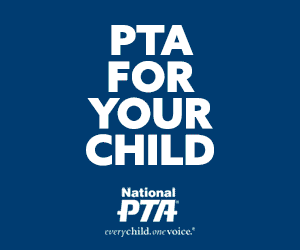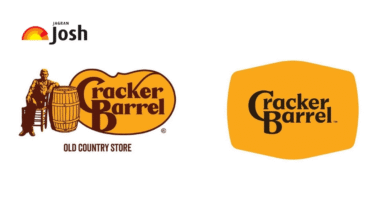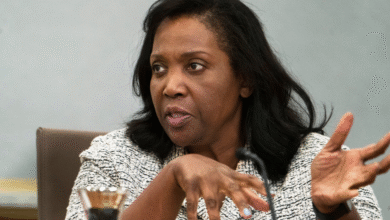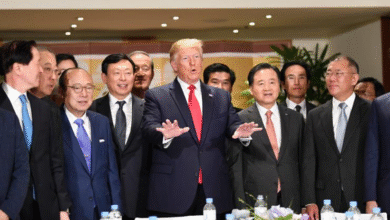National PTA Child Safety Efforts Under Scrutiny by Advocates

National PTA child safety remains a pressing concern as advocacy groups and parents alike seek effective solutions to protect their children online. In collaboration with Meta, the National PTA has been involved in various initiatives aimed at enhancing child safety on social media platforms. However, some recent reports raise questions about the transparency of this partnership, suggesting that the financial ties may undercut genuine advocacy efforts for child online safety. The ongoing Meta sextortion issue, which has tragically impacted families, including those like Mary Rodee’s, highlights the urgent need for improved protections against online dangers. As these discussions unfold, the National PTA’s role in promoting Meta’s child safety initiatives comes under scrutiny, revealing a complex landscape of responsibility and accountability in ensuring children’s well-being in the digital age.
Children’s welfare in the digital environment is a critical focus of organizations aiming to create safer online spaces. The collaboration between the National PTA and Meta exemplifies an effort to address child safety concerns, particularly as it pertains to social media usage among youth. Still, the advantages of such partnerships are being questioned, especially in light of recent controversies surrounding Meta’s practices, including the alarming trend of sextortion affecting minors. Reports suggest that while the National PTA advocates for ensuring a secure experience for children online, there may be underlying issues that challenge the effectiveness of these supportive endeavors. As the dialogue about child safety evolves, understanding the implications of partnerships like that of the National PTA and Meta is essential for fostering a safer digital environment for all children.
The Impact of National PTA on Child Safety Efforts
The National PTA plays a pivotal role in advocating for children’s safety by partnering with organizations like Meta to promote educational initiatives. However, this collaboration has raised concerns among parents and advocates regarding its transparency. While the PTA claims to provide parents with essential resources and information about online safety tools, critics argue that their partnership with a social media giant undermines the credibility of these initiatives. The financing behind these efforts suggests a potentially conflicting relationship, whereby the PTA may inadvertently endorse practices that contribute to online safety challenges faced by children.
As the National PTA continues its partnership with Meta, the dialogue surrounding child safety on social media becomes increasingly complex. Critics contend that the association masks Meta’s significant shortcomings regarding user safety. For instance, platforms like Instagram are frequently scrutinized for their impact on teen mental health. This dynamic illustrates the urgency for a comprehensive push towards genuine child safety advocacy, one that prioritizes transparency and accountability, ensuring that organizations do not trade ethical responsibilities for funding.
Advocacy Against Sextortion and Online Threats
The alarming rise in sextortion cases, particularly affecting teenagers, highlights the urgent need for robust online safety measures. Victims like Mary Rodee’s son underscore the devastating consequences of inadequate protections on social media platforms. Advocacy movements are increasingly calling for stricter regulations and enhanced safety measures from companies like Meta, who are perceived to prioritize engagement over user safety. This shift to demand accountability resonates with parents who believe that corporations must prioritize their moral responsibility over profit-driven motives.
Advocating for improved protections against sextortion, groups are emphasizing the need for educational resources that empower parents and children beyond mere interface tools. They are pushing for comprehensive strategies that include community education on recognizing online dangers and advocating for legislative changes that hold companies accountable for user safety violations. This collective advocacy, combined with informed parental guidance, seeks to create a safer digital environment for children, ensuring that their online experiences do not come at the cost of their mental and emotional well-being.
The current landscape of children’s safety on social media emphasizes the importance of collaboration among stakeholders—parents, educators, and tech companies. Understanding the risks and recognizing the failures in current safety protocols can propel more effective strategies for online security. For instance, numerous advocacy organizations are now pushing for the implementation of mandatory safety updates and features from platforms like Meta, ensuring a proactive approach to child safety and creating a responsible digital landscape for younger users.
As the community rallies to combat the threats of sextortion and other online dangers, it becomes clear that the responsibility lies not only with parents but also with tech companies and advocacy groups. By fostering a culture of accountability and transparency, stakeholders can work together to forge a safer online environment for children, ultimately ensuring that no parent has to suffer the consequences of online exploitation.
The Role of Meta in Child Online Safety Advocacy
Meta’s initiatives for child online safety have faced scrutiny, primarily due to the perceived conflict between its business goals and genuine advocacy. Although the company emphasizes its commitment to safeguarding children on its platforms, many argue that its efforts are superficial and do not address the critical concerns raised by parents and child safety advocates. As parents express frustration over inadequate protections, the narrative surrounding Meta’s role is increasingly viewed through a critical lens, calling into question the substance of its ‘safety tools’ that promise to protect young users.
Moreover, the partnership between Meta and organizations like the National PTA has resulted in a mixed perception of its child safety efforts. While the educational resources made available through these collaborations are important, they often fail to provide the substantial protections that parents seek. Parents are calling for more significant changes from Meta, urging the company to prioritize user safety by taking critical steps toward accountability in its practices. Support for parents and children must extend beyond promotional initiatives; it should foster a systemic change in how social media platforms operate regarding user safety and support.
Parents’ Concerns Over Meta’s Funding of Child Safety Initiatives
The financial ties between Meta and child safety advocacy organizations like the National PTA have ignited substantial concern among parents. Many view these partnerships as a troubling compromise, where financial contributions could lead to an allegiance that undermines the organization’s advocacy for true safety and well-being. Parents argue that accepting funds from a platform facing serious scrutiny over its safety capabilities raises ethical red flags, leading to a perceived lack of authenticity in the safety message being conveyed.
This growing skepticism among the parent community has prompted calls for heightened transparency regarding funding sources and decision-making processes within advocacy organizations. Parents demand accountability to ensure that entities representing their interests are not swayed unduly by financial motivations from social media corporations. True advocacy for children’s safety must arise from a commitment to their welfare rather than a façade of support backed by corporate dollars.
Meta’s Child Online Safety Tools: Effective or Insufficient?
The effectiveness of Meta’s child safety tools, such as those available on Messenger and Instagram, continues to face criticism from parents, educators, and advocacy groups. While Meta promotes these features as a means to keep young users safe, many users report that these tools often fall short in practicality. Concerns about the presence of inappropriate content and the accessibility of harmful interactions on its platforms remain persistent frustrations for families. Critics argue that the measures introduced by Meta are insufficient and fail to genuinely address the complexities surrounding children’s safety in the online world.
Advocates emphasize that rather than merely introducing new features, a systemic overhaul is necessary to truly protect children online. This could include more robust monitoring of content, improved educational programs for users, and a comprehensive framework for addressing online abuse. Parents want to see demonstrable actions that go beyond marketing strategies, assuring them that their children can navigate social media environments without encountering significant risks to their safety. Without substantial improvements, the credibility of Meta’s child safety initiatives will remain in doubt, prompting further calls for more meaningful regulation and support.
The Need for Transparency in Child Safety Partnerships
As the partnership between Meta and the National PTA unfolds, the demand for transparency regarding these collaborative efforts has never been greater. Advocates urge for clear communication about the financial incentives that underpin these relationships, asserting that true advocacy should build trust and integrity without the obstacles of undisclosed conflicts. By shedding light on funding and partnership dynamics, organizations can cultivate a more trustworthy reputation among the parent community and increase the effectiveness of their advocacy.
Transparency not only promotes accountability but also empowers parents with the knowledge needed to make informed decisions about engagement with these organizations. As parents become increasingly aware of the implications of corporate sponsorships, organizations must adapt their approaches to foster trust and collaborate meaningfully towards tangible solutions to child safety issues. Without this open dialogue, misconceptions and distrust can proliferate, further complicating the urgent discussions surrounding kids’ safety in digital spaces.
Legislative Measures to Enhance Child Safety Online
In the wake of growing concerns regarding child safety online, there is a pressing need for legislative measures aimed at regulating the practices of social media companies. Advocacy for stronger laws and regulations to protect children has gained momentum, emphasizing the need for enhanced safety protocols that go beyond self-imposed guidelines by companies. Many parents and activists are calling for clearer accountability mechanisms that hold tech giants like Meta responsible for safeguarding young users on their platforms, particularly against the rising threats of online exploitation.
Legislative frameworks could require social media platforms to implement more robust safety features, conduct regular audits of their child safety measures, and ensure compliance with established protocols. By actively engaging lawmakers and advocating for meaningful reforms, parents and advocacy groups can help shape a safer online environment for children. The urgency to address these issues collaboratively underscores the collective responsibility shared among legislative bodies, organizations, and tech companies in prioritizing children’s safety in the digital age.
Building Community Awareness for Child Online Safety
Building community awareness plays a critical role in fostering child online safety, as it empowers parents, educators, and children with the knowledge needed to navigate potential threats effectively. Community outreach programs aimed at educating families about online dangers are essential in cultivating safer digital environments. When parents are better informed about the risks, including sextortion and exposure to inappropriate content, they can take proactive measures to protect their children.
Moreover, grassroots movements that involve schools, local organizations, and social media platforms can create a network of support that empowers communities to address child safety comprehensively. Workshops, informational sessions, and collaborative events can bridge gaps in knowledge and foster open dialogues about children’s experiences online. Such initiatives not only raise awareness but also provide platforms for discussing and implementing safety practices, ensuring that every parent feels equipped to handle the complexities of their child’s online presence.
Challenges Faced by Child Safety Organizations
Child safety organizations are tasked with navigating numerous challenges as they advocate for the protection of young users in an increasingly complex digital landscape. One primary challenge is the rapid evolution of technology and the concurrent emergence of new threats like sextortion, necessitating constant adaptation and updates to safety measures. As social media platforms frequently update their interface and features, it can be difficult for safety organizations to keep pace and develop effective strategies to mitigate potential risks.
In addition to technological challenges, child safety organizations must contend with varied perceptions and expectations from parents, educators, and the public. Balancing transparency with the need to maintain positive relationships with funding partners, such as corporations like Meta, poses a further complexity. Ensuring they remain faithful to their mission while navigating these dynamics demands a strategic approach that aligns the various stakeholders’ interests and their overarching goal of ensuring children’s safety in online environments.
Frequently Asked Questions
How does the National PTA contribute to child safety initiatives in partnership with Meta?
The National PTA works with Meta to promote various child safety initiatives and tools designed to protect children online. Through this partnership, they provide parents with information about available safety resources for managing their children’s presence on platforms like Instagram and Messenger.
What concerns have been raised about the National PTA’s collaboration with Meta regarding child online safety?
Concerns have been raised that the National PTA’s collaboration with Meta gives the company an undeserved level of credibility, especially in light of rising scrutiny surrounding the impact of its platforms on youth. Critics argue that financial ties may influence the PTA’s advocacy efforts in favor of Meta’s child safety narrative.
What is the importance of child online safety advocacy in the context of the National PTA and Meta partnership?
Child online safety advocacy is crucial as it aims to protect children from potential harm posed by social media platforms. The National PTA’s partnership with Meta allows for increased awareness and education on safety tools, although it also faces criticism concerning the effectiveness and sincerity of Meta’s efforts.
How has the Meta sextortion issue influenced discussions about child safety through the National PTA?
The Meta sextortion issue has amplified discussions around child safety, especially after tragic incidents involving youth. It highlights the need for stronger protections and accountability from platforms like Meta, with advocates and parents calling for more transparency in the PTA’s stance on these issues.
What role does the National PTA play in informing families about children’s safety on social media?
The National PTA plays a significant role in informing families about children’s safety on social media by providing resources and educational material regarding safe online practices. Their partnership with Meta allows them to highlight available safety tools, although it is tempered by criticisms of potential biases due to funding.
What are the risks associated with child online safety as highlighted by cases involving Meta’s platforms?
Cases involving sextortion and other harmful online interactions have highlighted significant risks to child online safety on Meta’s platforms. With reports of life-altering consequences for victims, there is a growing call for improved safety measures and more effective advocacy from organizations like the National PTA.
How has parent advocacy influenced the National PTA’s position on child safety initiatives?
Parent advocacy has induced the National PTA to reassess its position on child safety initiatives, especially in light of tragic stories like that of Mary Rodee, whose son fell victim to sextortion via Meta’s Messenger. This advocacy emphasizes the need for genuine action and responsibility from both the PTA and social media companies.
What is the significance of the Tech Transparency Project’s report on the National PTA and Meta?
The Tech Transparency Project’s report is significant as it raises important questions about the integrity of the National PTA’s advocacy for child safety in light of its financial relationship with Meta. It suggests that such partnerships may dilute the effectiveness of child safety initiatives and forward a narrative favorable to Meta.
| Key Points | |
|---|---|
| Meta’s Relationship with National PTA | Meta has sponsored the National PTA, giving it credibility in promoting child safety despite financial ties. |
| Claims of Undue Influence | Tech Transparency Project alleges that this relationship shapes public narratives about Meta’s practices related to youth safety. |
| Parental Concerns | Parents like Mary Rodee criticize organizations that accept funding from Meta, arguing it compromises genuine child safety efforts. |
| Sextortion Incidents | The report emphasizes a rise in sextortion cases linked to social media, including a tragic case involving Mary Rodee’s son. |
| Government Scrutiny | The FTC has accused Meta of misleading parents regarding safety measures on the Messenger Kids app. |
| User Reviews & Effectiveness | Critics argue that Meta’s safety tools are ineffective and fail to protect children from inappropriate content. |
Summary
National PTA child safety initiatives are under intense scrutiny following allegations about Meta’s influence on the organization. While the National PTA aims to promote child safety, the partnership with Meta raises concerns about transparency and effectiveness. The tragic experiences of parents like Mary Rodee highlight the urgent need for genuine and independent child safety measures, as many believe that such alliances may distract from the risks that vulnerable youth face online. Advocates are calling for more accountability from both organizations and a reevaluation of safety strategies in the digital realm to truly protect children.




